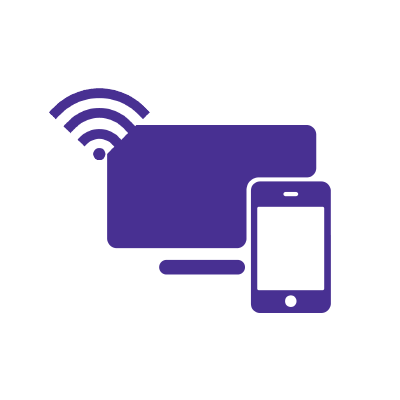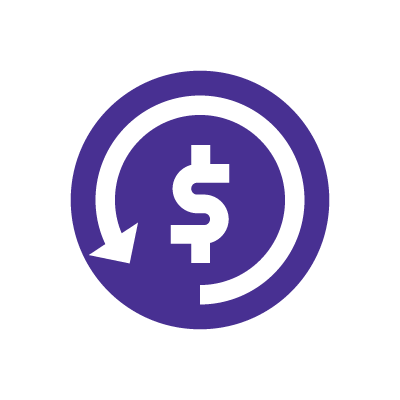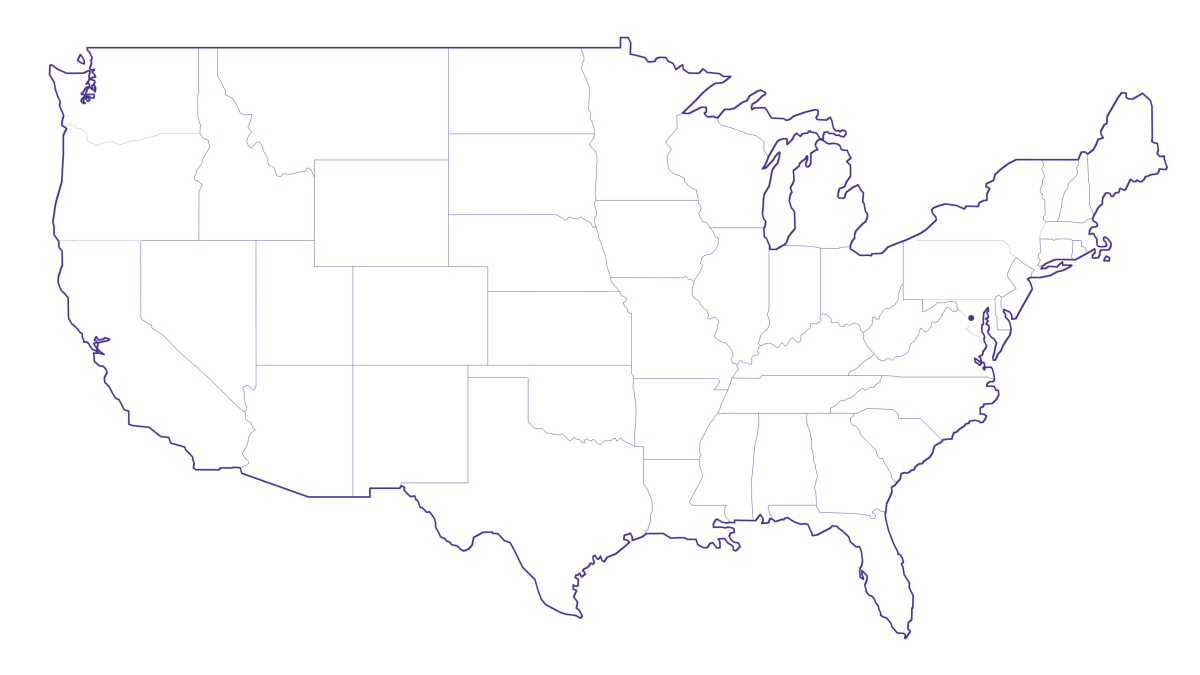13 ways to lower your cell phone bill

With most Americans owning a mobile phone and the average cell phone bill continuing to rise in 2025, NerdWallet states that single plans now cost between $70 and $100 per month, while family plans range from $160 to $200. These rising cell phone service costs can quickly strain a household budget, making it essential to find ways to save without giving up important services or features.
In this article, we’ll look at a few easy adjustments and practical strategies for lowering your monthly phone costs and increasing your savings.
What you'll learn:
- Use WiFi when possible
- Limit background data usage
- Track data usage
- Change or remove your phone insurance
- Sign up for autopay/paperless payments
- Set data usage limits and alerts
- Keep your old phone for longer
- Add lines to your plan
- Audit your bill
- Update your service address
- Take advantage of discounts
- Earn cash back or rewards from credit cards
- Switch carriers
1. Use WiFi when possible
Using WiFi whenever possible is a great way to save money on your cell phone bill. Adjusting your phone settings to accept trusted WiFi connections reduces data usage and helps you avoid overage charges or speed throttling on LTE or 5G networks.
It’s easy to connect to WiFi at home or work and many public places like restaurants and stores offer free access letting you stay connected while saving money. For your home internet, providers like Astound offer reliable high speed internet plans that can handle data-intensive activities like downloading or streaming HD content, transferring files and playing online games.
To lower your bill even further, download large files or media content ahead of time while on WiFi and enjoy them offline later.
2. Limit background data usage
Even when you aren’t actively using an app, it can still continue to consume mobile data and drain your smartphone’s battery power. Over time, these hidden activities might add unnecessary expenses to your cell phone bill, especially if you’re on a limited data plan.
You can significantly minimize data usage and increase your device’s battery life by monitoring and limiting apps’ background usage, ultimately saving you money.
Both the iOS and Android operating systems include built-in controls for app background processes, making it easy to control your mobile data usage.
iPhone settings
To limit background data activity on iPhones, go to the Settings app, then General > Background App Refresh to individually enable or disable the background app refresh option for specific apps.
Android settings
On Android phones, navigate to Settings > Connections > Data Usage, then turn on Data Saver and choose which apps to turn Data Saver on and off.
Mobile + Internet + TV
Switch to Astound
Get Astound Mobile, Internet and TV—and save on the best services available.

3. Track data usage
By regularly monitoring and regulating your usage, you can discover which apps or activities require excessive mobile data usage and take measures to reduce the usage before it impacts your cell phone bill.
How much data does the average person use monthly?
According to DataReportal’s 2025 Mobile Data Consumption Trends Report, the average mobile user consumes 21.6 GB of mobile data each month.
Most smartphones include built-in settings that display your total data consumption, along with a breakdown by apps and time period.
Monitoring this information regularly allows you to identify unexpected surges, adjust your habits and stay within your plan limit to avoid overage penalties and throttled speeds from your cell phone service provider.
iPhone cellular data
To monitor your data usage on an iPhone:


- Go to Settings
- Select Cellular or Mobile Data
- Scroll down to view your data usage per app for the current period
You can also toggle off mobile data for specific apps so they only connect when you’re on WiFi, helping you stay within your data plan limits.
Android data usage
On your Android phone:
- Go to Settings
- Select Network & internet > SIMs


- Choose SIMs > App data usage
- View total data used during your billing cycle and data usage per app
- Here you can also add SIMs > Data warning & limit settings to avoid extra charges from your cell phone service provider


Average data usage by activity
The table below shows an estimate of how much data various online activities consume per hour.
| Activity |
Estimated Data Use per Hour |
|---|---|
| Emailing (without large attachments) | ~0.04 GB (40 MB) |
| Web browsing | ~0.28 GB (280 MB) |
| Playing online multiplayer games | ~1 GB |
| Streaming music (e.g., Spotify) | ~0.056 GB (56 MB) |
| Streaming video (SD) | ~0.75 GB |
| Streaming video (HD) | ~3 GB |
| ~3 GB | ~7 GB |
| Video calling (SD) | ~0.33 GB |
| Video calling (HD) | ~2 GB |
| Social media browsing (Instagram, TikTok) | ~0.7 GB |
| App/Software updates | Varies, often 0.5–2 GB per update |
|
Activity
Emailing (without large attachments) |
Estimated Data Use per Hour
~0.04 GB (40 MB) |
|
Activity
Web browsing |
Estimated Data Use per Hour
~0.28 GB (280 MB) |
|
Activity
Playing online multiplayer games |
Estimated Data Use per Hour
~1 GB |
|
Activity
Streaming music (e.g., Spotify) |
Estimated Data Use per Hour
~0.056 GB (56 MB) |
|
Activity
Streaming video (SD) |
Estimated Data Use per Hour
~0.75 GB |
|
Activity
Streaming video (HD) |
Estimated Data Use per Hour
~3 GB |
|
Activity
~3 GB |
Estimated Data Use per Hour
~7 GB |
|
Activity
Video calling (SD) |
Estimated Data Use per Hour
~0.33 GB |
|
Activity
Video calling (HD) |
Estimated Data Use per Hour
~2 GB |
|
Activity
Social media browsing (Instagram, TikTok) |
Estimated Data Use per Hour
~0.7 GB |
|
Activity
App/Software updates |
Estimated Data Use per Hour
Varies, often 0.5–2 GB per update |
Network & Coverage
Astound's got you covered
Our mobile service runs on a nationwide network with 5G service in all 50 states giving you reliable nationwide coverage you can count on.

4. Change or remove your phone insurance
Most cell phone service providers provide insurance programs that offer extended warranties for damaged or stolen phones or round-the-clock technical help for your gadget.
While phone protection can offer peace of mind, it comes with a cost. According to Coherent Market Insights, mobile phone insurance costs between $8 and $20 per month, with deductibles ranging between $29 and $200, depending on the device and the provider’s coverage.
That can add up to an extra $360 per year in expenses, before factoring in any deductibles you need to pay after filing a claim.
If you’re looking to reduce expenses and stay within your budget, consider skipping phone insurance and setting aside that amount in a dedicated savings account instead. This way, you’ll have the money available to cover the cost of a new phone or any necessary repairs when the need arises.
5. Sign up for autopay/paperless payments
Several wireless providers offer monthly discounts ranging from $5 to $10 per line when you participate in their paperless billing and automated payment system using a qualified bank account or credit card.
The deals can include additional mobile data, service perks such as extra data, bonus features for new customers or a percentage off your monthly payment. For example, Astound offers a $10 discount with automated bank account deduction or a $5 discount for automated credit/debit card payments. Ask your network carrier if they provide any incentives for enrolling in automatic payments.
The Consumer Financial Protection Bureau (CFPB) states in their 2023 report on credit card late fees that Americans spend about $12 billion annually in late fees, which can be as high as $41 per payment. By ensuring your bill is paid automatically each month, autopay helps you avoid missed payments and the costly late payment penalties that can accumulate over time and increase your overall cost. The CFPB has even proposed limiting this maximum late charge to $8, underscoring how valuable it is to prevent late payments altogether.
6. Set data usage limits and alerts
Although many mobile data plans are promoted as “unlimited,” they contain a data cap, after which your data speeds will be significantly slower.
Most smartphones allow you to change the data usage settings on your phone to set custom limits and receive alerts when you approach them or pass a certain threshold, giving you greater control over your mobile plan usage.
Monitoring the limits and alerts will help you avoid speed throttling, track your data usage more effectively and ensure you don’t pay extra charges for exceeding your data allotment.
If you’re not sure how to enable these settings, contact your carrier’s customer service team or online support tools to help you through the process.
Android data limit
To set a data limit on your Android phone:
- Go to Settings > Network & internet
- Tap SIMs and scroll to Data warning & limit
- Next, select Mobile data usage cycle, toggle the Set data warning icon and tap on Set data limit
When your phone exceeds the specified limit, it switches off mobile data.
iPhone data limit
Unfortunately, there isn’t a built-in feature on iOS to provide a data limit alert. Instead, you can install a third-party app on your iPhone to set data limits.
7. Keep your old phone for longer
Before upgrading your phone, take time to weigh the pros and cons.
Buying a mobile phone through your carrier as part of a phone plan can lock you into a contract with an additional $20 to $40 in monthly installments, increasing your overall cell phone bill.
To lower your phone bill, hold on to your current device until you truly need to upgrade your phone. If you need to buy a new phone, consider paying for it upfront, buying a used one or taking advantage of a bring your own device option with your cell phone provider.
These approaches can save you money while giving you more flexibility to choose the plan that works best for you.
8. Add lines to your plan
Many cell phone providers offer family plans allowing you to add additional lines to a single account at a discounted rate. By sharing a plan, you can significantly lower your monthly phone bill.
Adding lines to your cell phone plan allows you to take advantage of discounted rates, bundled services and special financing incentives for customers. Mobile carriers like Astound offer multi-line discounts on family plans when you bundle them with internet services, offering savings that can lower your overall cell phone bill.
9. Audit your bill
It’s important to carefully review your bill to be sure that you aren’t paying for a plan that includes cell phone services you don’t need.
For example, you may be paying for an unlimited talk, text and data plan, but you only use your data sparingly and don’t use all of your text and talk time.
On the other hand, if you find yourself routinely exceeding the data cap on a limited plan, an unlimited plan may be a more cost-effective solution.
You should also check whether your carrier provides extra perks, like offering subscription services for streaming movies and music or sports packages. These benefits can add value to your plan and help you plan your monthly budget effectively.
10. Update your service address
Your service location determines the taxes and fees charged to your monthly payment. If you move, or if someone on your shared plan relocates to a different area with lower fees and taxes, updating your service address with your cell phone provider could result in significant savings.
In addition, updating your service address ensures billing accuracy, since an outdated address may lead to billing discrepancies, getting charged incorrect taxes and fees or facing service activation issues. Also, some services and features offered by your carrier may be location-specific.
Updating your service address ensures you have access to all plans, promotions or bundled features that are available in your location. This change can be done on your carrier’s website, mobile app or by contacting customer service.
See how much you can save
Save with Astound
Check out our savings calculator to see the change in your bill when you build a plan with Astound.

11. Take advantage of discounts
Cellular carriers usually run promotions and discounts with specific businesses, schools or organizations with which they have partnerships.
These discounts include lowered rates or tailored features targeting particular audiences, including students, seniors, low-income earners and military service members. Your employer also may have discounts or offer reimbursements with certain cell providers.
Other types of carrier promotions and discounts you can consider lowering your cell phone bill include:
- Trade-in deals: These deals allow customers to exchange their old phones for a discount on a new phone’s price.
- Switching bonuses: Some carriers offer cash incentives, bill credits, unlimited lines or free phone accessories when you switch from one carrier to another.
- Seasonal and holiday promotions: Most mobile carriers offer discounts and special offers during holidays or special occasions such as Black Friday, Cyber Monday or Christmas.
Always review what discounts and promotions your existing provider offers and compare them with those of other providers to determine what best meets your needs and budget.
12. Earn cash back or rewards from credit cards
Using a rewards credit card to pay your mobile phone bill can turn the expense into an opportunity to save. Many cashback credit cards provide significant incentives, either in cash back, points, travel rewards or even cell phone protection plans, when you use the card to pay for your cell phone bills.
When managed effectively, using cashback credit cards is a great way to save and improve your personal finances. Just be sure to pay the balance in full each month to avoid interest charges that could hurt your credit score.
13. Switch carriers
If your current plan is no longer the best fit for your needs or budget, compare cell phone carriers to find a plan that offers better prices, coverage and features and choose the one that meets your demands and provides the most value.
Mobile Virtual Network Operators (MVNOs) are cheaper, smaller and lesser-known carriers that use larger cellular carriers’ network towers to transmit your phone signal. According to Grand View Research, the US MVNO market was valued at $27.96 billion in 2023 and is projected to grow to $46.31 billion by 2030 driven by demand for flexible, affordable mobile plans.
What are MVNOs and why are they cheaper?
MVNOs are mobile carriers that don’t own their own network infrastructure. Instead, they lease access to major providers’ towers, which allows them to cut overhead costs and pass those savings on to customers through lower monthly rates and more flexible plan options.
MVNOs offer excellent coverage and flexible plans without long-term contracts at a fraction of the cost you would pay for larger carriers.
Astound Mobile is an MNVO, which allows us to pass our savings directly to customers. Sign up today and compare Astound’s plans with other carriers to see how much you can save monthly while enjoying reliable nationwide coverage.
Find your next phone
Ready to upgrade your phone? Check out our selection of the top names including the Samsung Galaxy, iPhone, and Google Pixel.

Frequently Asked Questions
How is the bill paid each month?
You can pay your bill each month online using your MyAstound account, through a Care agent via chat, the retail store location nearest you or by calling us at 1.800.427.8686. You can also mail your payment to us at the address included on your monthly statement.
How can I monitor my data usage?
You can see your data usage on your Astound Mobile online account or through the Astound Mobile app. Select the “Activity” tab to view your data usage details.
What happens if I go over my data limit?
When you exceed your data allowance, your mobile service provider may charge overage fees or slow down your internet speeds for the rest of the billing cycle.
Save with Mobile & Internet Together
Get the mobile service, home internet & streaming that’s just right for you.
Astound Mobile requires Astound Internet service. Coverage not available in all areas. A trademark of Ziff Davis, LLC. Used under license. Reprinted with permission. Where available. © 2025 Ziff Davis, LLC. All Rights Reserved. All names, logos, images and service marks are property of their respective owners. ©2025 Radiate Hold Co., LLC d/b/a Astound Broadband. All rights reserved.
This website contains instructional information, including from third-party sources, and is intended, but cannot be guaranteed, to be always up-to-date, complete and accurate. Astound does not endorse, and is not responsible for, any third-party content that may be accessed through this website. Any representation or warranty by Astound that might be otherwise implied by information on this website is expressly disclaimed. Astound expressly disclaims all liability or responsibility with respect to actions taken or not taken based on any or all of the instructional information contained on this website. Astound does not warrant or guarantee the availability of any services at any specific time or geographic location or that services will be provided without interruption. Not all aspects of the Astound services function on all equipment and devices. Use of this website is subject to the Web Site Disclaimer and Web Content Accessibility Policy.

















